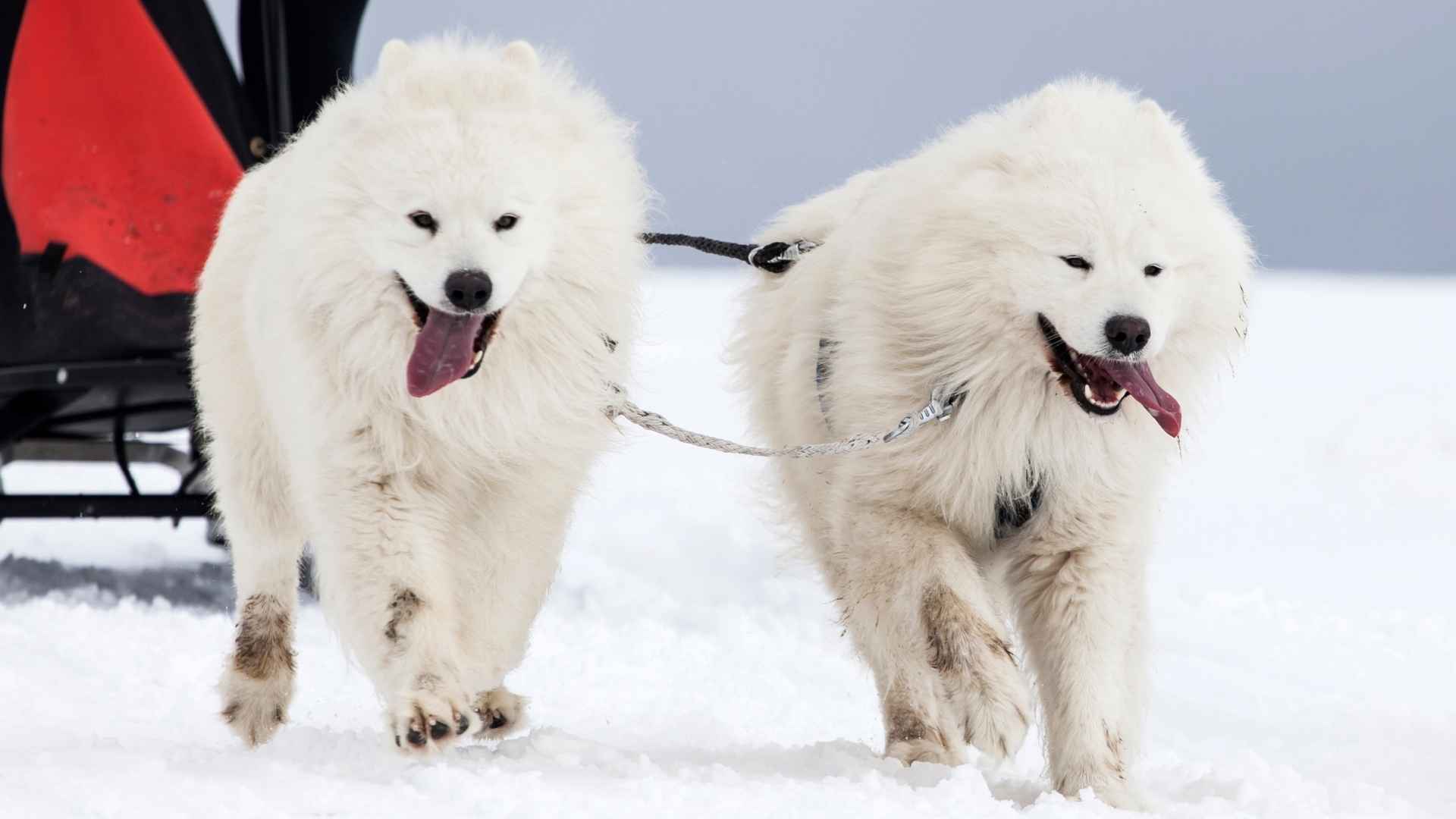While some dogs love warm and sunny days, snow dog breeds thrive in cold weather. Their thick double coat helps them survive extreme temperatures. Many of their ancestors hail from the arctic region, but these dogs have now spread all across the globe.
Snow dog breeds come in varying sizes. They can assist their owners in guarding and hunting, and make wonderful companions. Many cold-weather dogs have the stamina, speed, and agility to conquer icy terrains.
These cold-weather dogs are highly adaptable, but we would not recommend keeping a snow dog in very hot environments, as their thick coat can overheat them. It is also not advisable to leave your dog outside when it is too cold.
Have a look at the top dog breeds well suited for cold weather.
Dog Breeds for Cold Climates
1. Siberian Husky
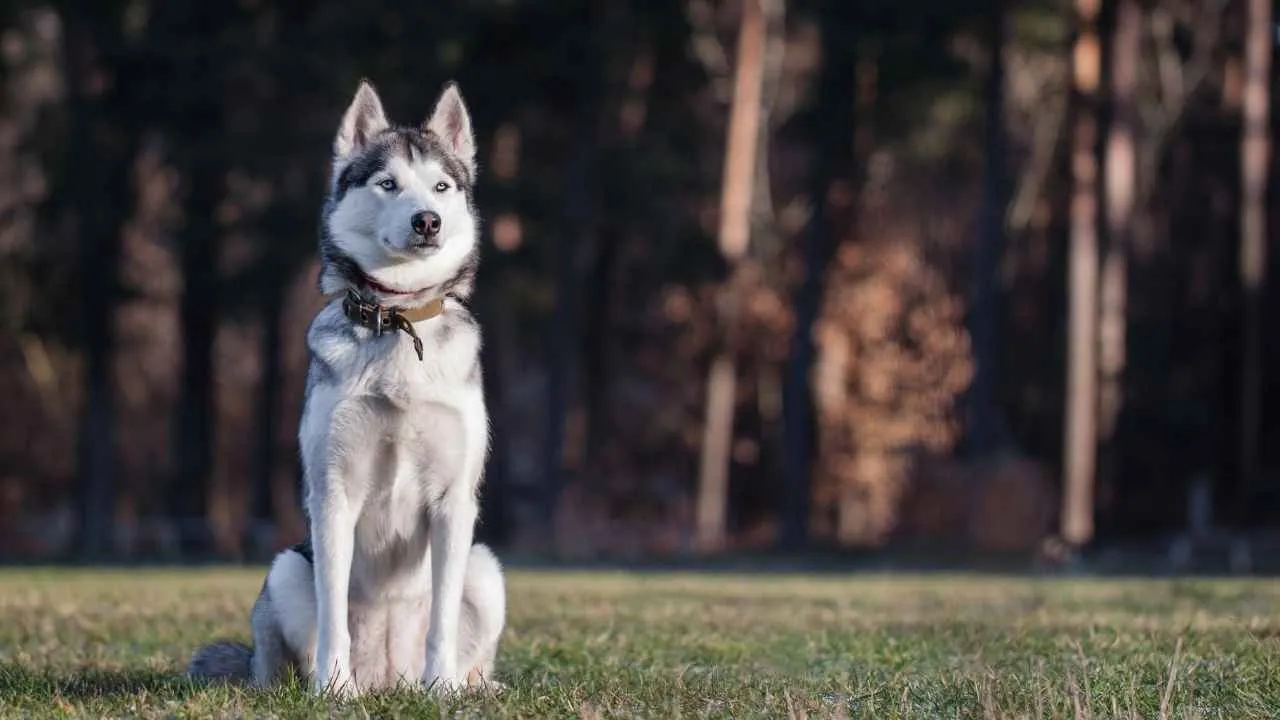
Breed Profile
Height: 20 to 23.5 inches
Breed Group: Working
Shedding: High
Siberian Huskies have an impressive ability to play, work, and survive in cold weather. Their ancestors, developed by the semi-nomadic Chucki people, were meant to withstand freezing temperatures. That is why they prefer cold and quickly adapt when the winters roll around.
Their thick double coats act like a blanket, providing the much-needed insulation. But Huskies shed heavily, especially in spring and fall. Shedding the thick winter coat helps make way for a lighter summer coat and vice versa.
Smaller dogs lose heat faster than larger dogs. Huskies’ medium-sized bodies do not lose much heat. Their bodies are conditioned for the cold weather. They sleep in a curled-up ball position to conserve heat.
Their pointy ears have a lot of short fur around them, which acts like built-in earmuffs. The presence of dense hair on and inside their ears makes Huskies less vulnerable to frostbite.
2. Alaskan Malamute
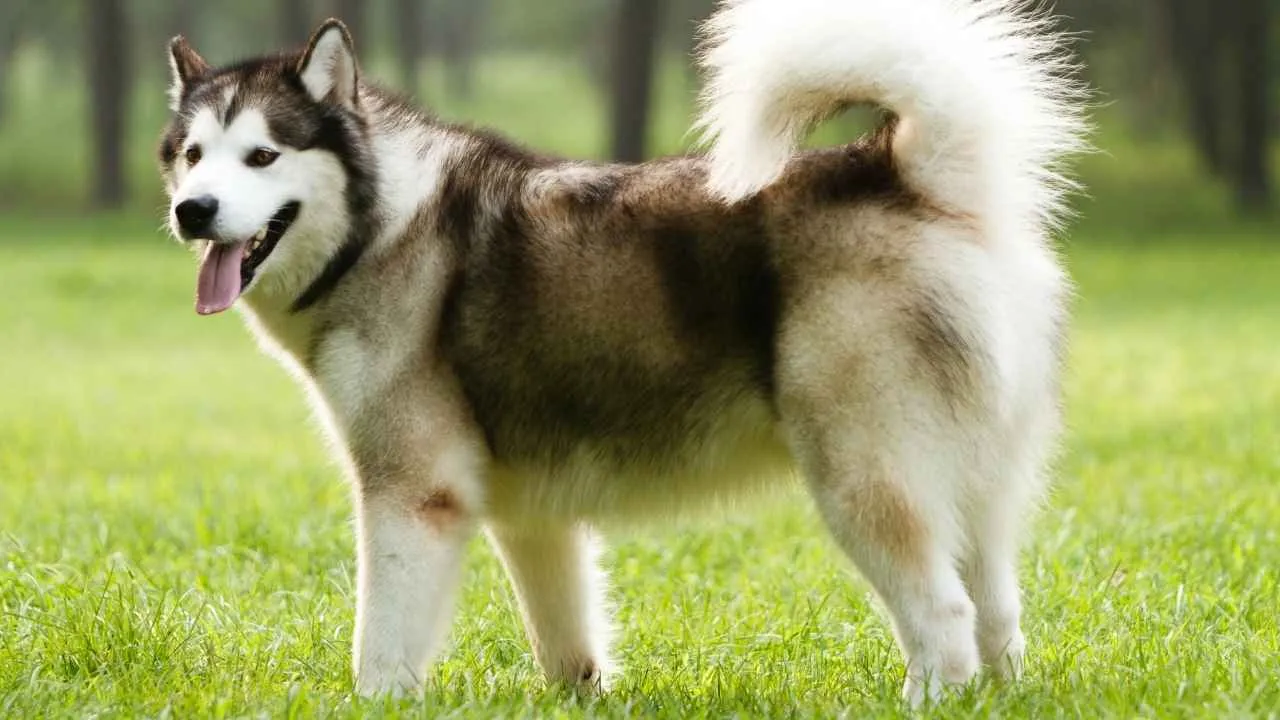
Breed Profile
Height: 23 to 25 inches
Breed Group: Working
Shedding: Moderate
Having a rich history as Arctic sled dogs, Alaskan Malamutes’ unique physical traits enable them to adapt well to cold weather climates. Their coarse outer coat, woolly undercoat, tough pads, and sturdy build provide excellent insulation in cold temperatures.
Their sturdy bodies allow these working dogs to perform well in snowy environments. Alaskan Malamutes bear a resemblance to Huskies, but they are a bit heavier. These large and independent dogs make great companions for active families.
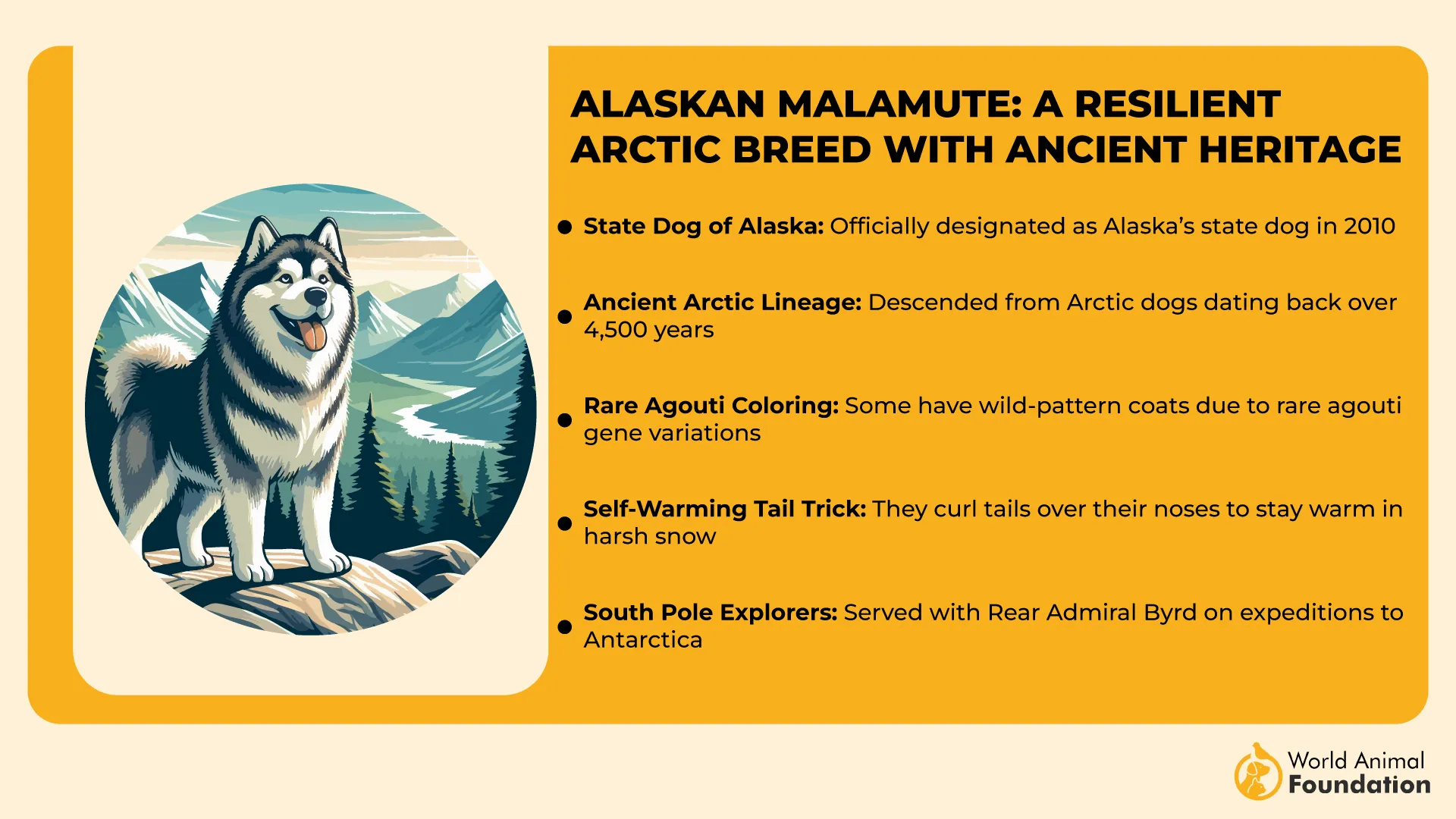
The nutritional needs of Alaskan Malamutes increase in cold weather as they need to burn more calories to keep themselves warm. Therefore, a high-calorie diet is beneficial in winter. Adequate hydration is important, as they might not feel thirsty in cold weather but still need plenty of water.
3. Great Pyrenees
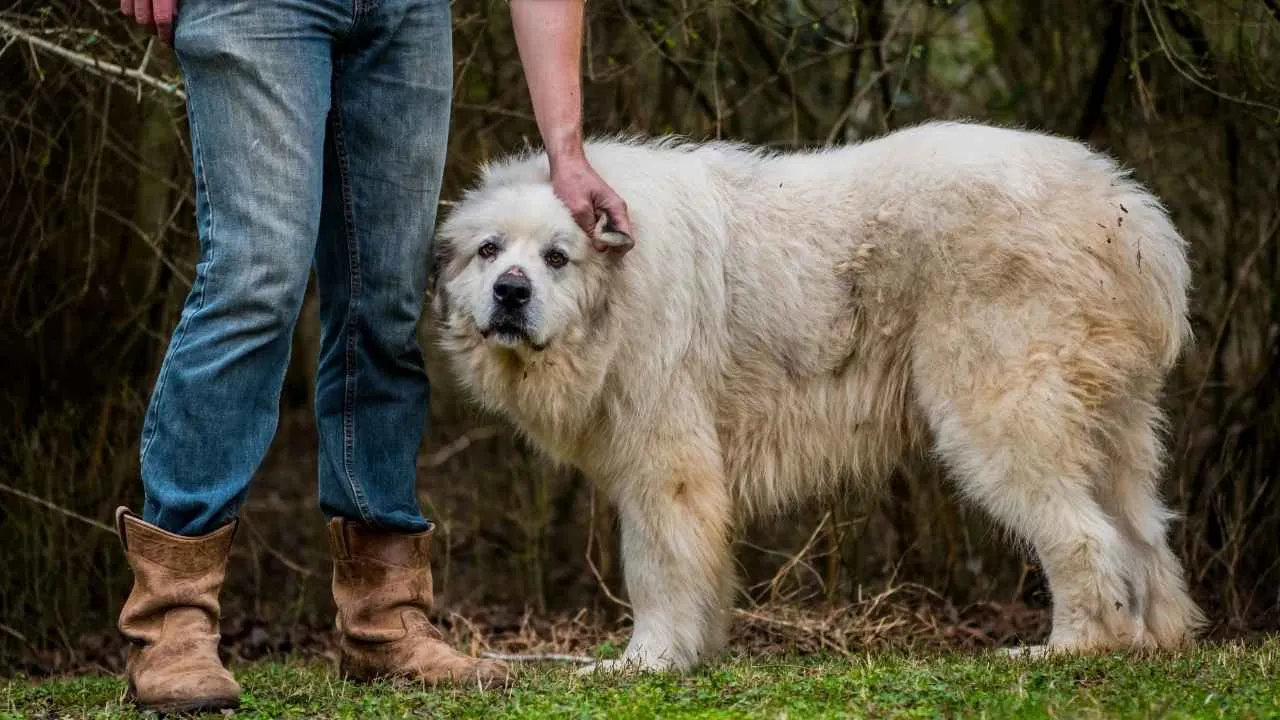
Breed Profile
Height: 25 to 32 inches
Breed Group: Working
Shedding: High
The Great Pyrenees, or “the powdered donuts,” is a large working dog breed from the Pyrenees mountains between France and Spain. The Great Pyrenees were originally bred to protect livestock in cold and snowy environments.
The adult dogs do well in cold weather climates if they have access to dry and insulated shelter, and they keep getting fresh food and water. Just like other snow dog breeds, the Great Pyrenees has a thick coat that not only repels water but also provides insulation.
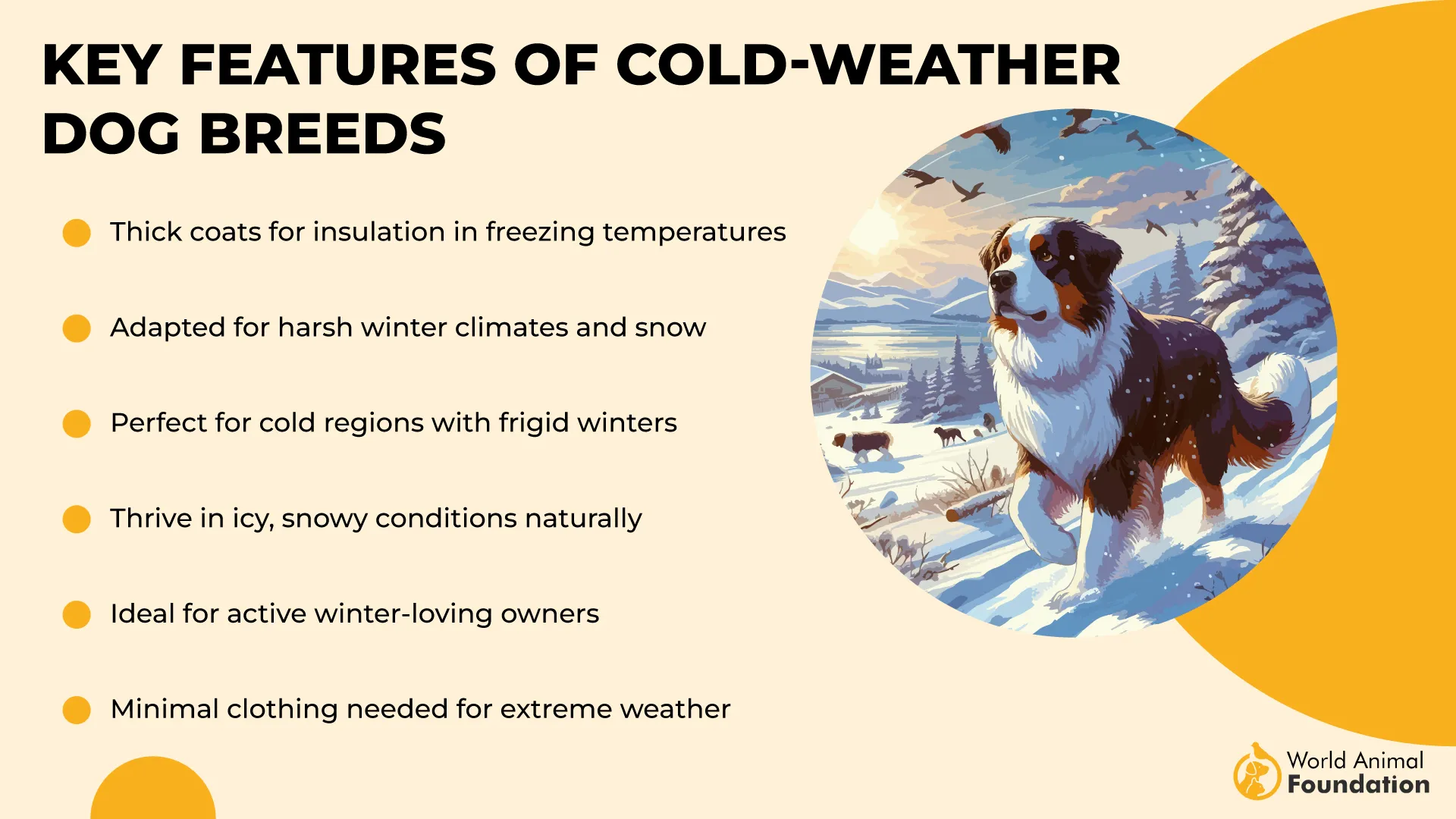
Their sturdy build enables them to navigate snowy terrains and slippery surfaces. The Great Pyrenees are the true gentle giants with a calm demeanor. They get along well with kids. These snow dogs have moderate energy levels and need 30 to 60 minutes of daily exercise.
4. Samoyed
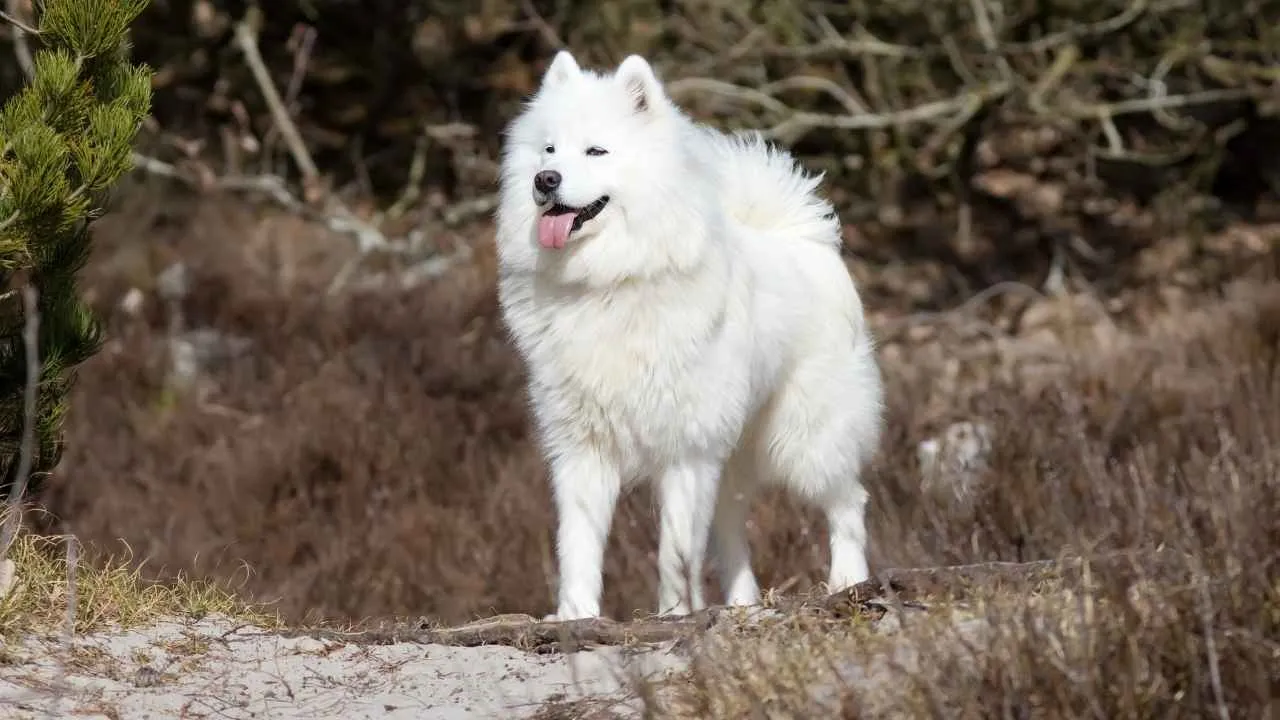
Breed Profile
Height: 19 to 23.5 inches
Breed Group: Working
Shedding: Moderate
Samoyed is a popular dog breed known for its pure white fur. According to PetMD, these friendly dogs have a strong affinity for cold weather. Due to their Northern origin, they are built for working in extremely cold weather.
They were originally bred to herd reindeer and pull sleds in Northwestern Siberia. They have a thick double coat consisting of a long, straight-haired upper coat and a soft, dense undercoat. Samoyeds are big, fluffy dogs that can adjust well with other dogs.

Samoyeds’ thick fur sheds a lot. Pet parents should use a de-shedding tool to help manage shedding during winter. This tool is specifically designed to remove loose undercoat hair without damaging the top coat.
5. Bernese Mountain Dog
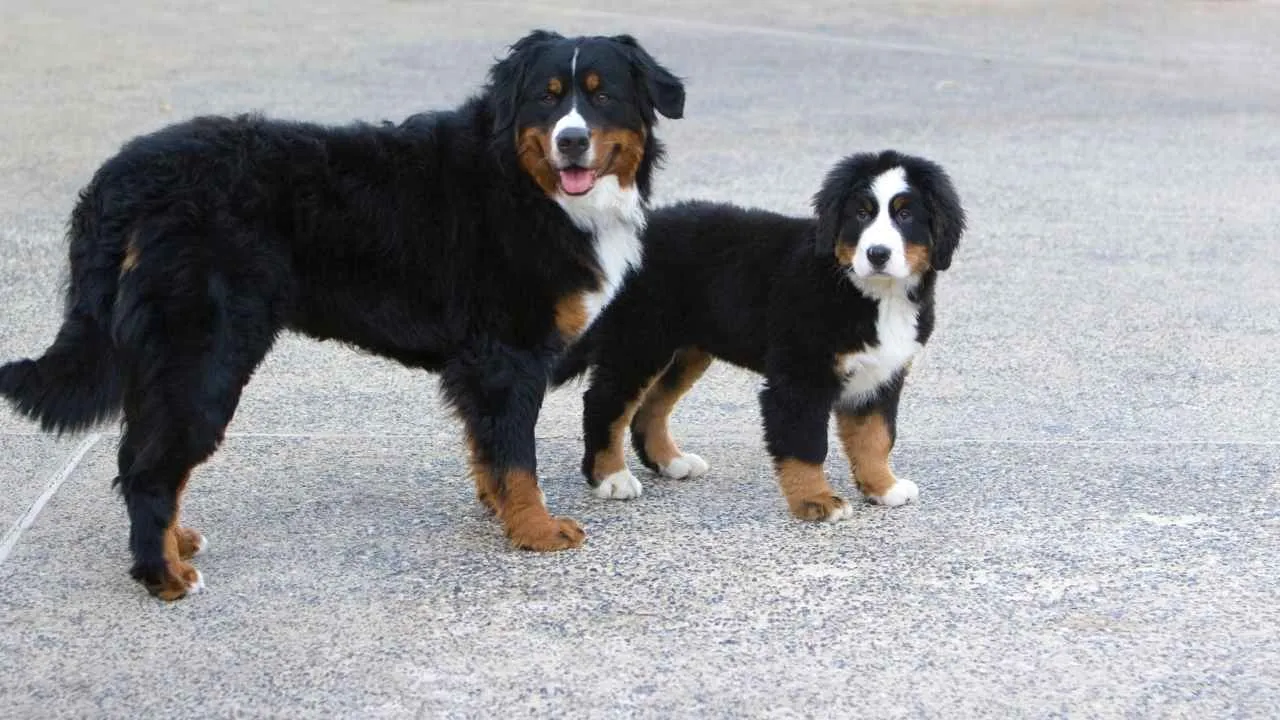
Breed Profile
Height: 23 to 27.5 inches
Breed Group: Working
Shedding: High
Bernese Mountain dog is a dog breed that loves snow! These tricolor dogs with a sturdy build hail from the Swiss Alps and are known for their ability to bear cold climates. Just like other snow dogs, their thick fur also provides them with insulation and keeps them warm.
Bernese mountain dogs are affectionate and patient pups that behave well around children. According to Purina, they are highly social— they love being surrounded by people, and get plenty of attention. They bark to inform you about the arrival of your visitors, but then settle down soon.
Despite having a natural resilience against cold, these dogs face a lot of health issues in cold climates. They are vulnerable to hypothermia and frostbite in extremely low temperatures, particularly in less insulated areas like paw pads and nose. The cold weather can exacerbate joint pain and arthritis in older dogs.
6. Tibetan Mastiff
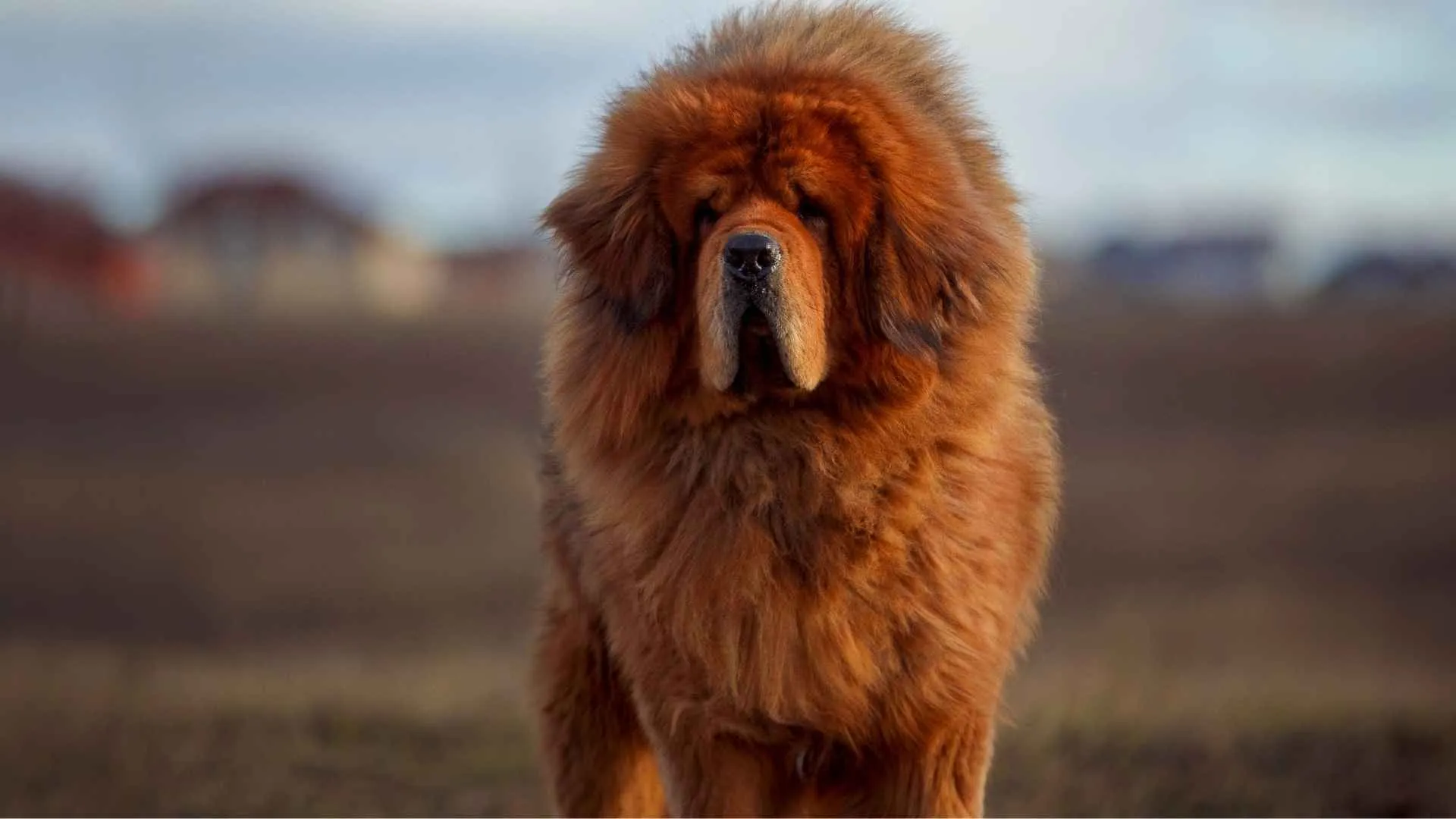
Breed Profile
Height: More than 24 inches
Breed Group: Working
Shedding: High
Having a unique lion-like mane, Tibetan mastiffs thrive in frigid temperatures due to their Himalayan legacy. They can adapt well to various climates if properly taken care of. Due to their impressive size, Tibetan mastiffs rank among the world’s biggest dog breeds.
Their two-layered thick fur with a coarse top coat and a woolly undercoat, enables them to bear freezing temperatures. Their muscular build, alert nature, power, and agility allow them to do well on icy trails. They are very protective of their owners but are aloof around strangers.
These alert dogs do not do well in hot weather. Pet parents living in temperate regions need to take precautionary measures to keep their Tibetan mastiffs cool in summer and spring. They have moderate energy levels and require 60 minutes of daily exercise.
7. Norwegian Elkhound
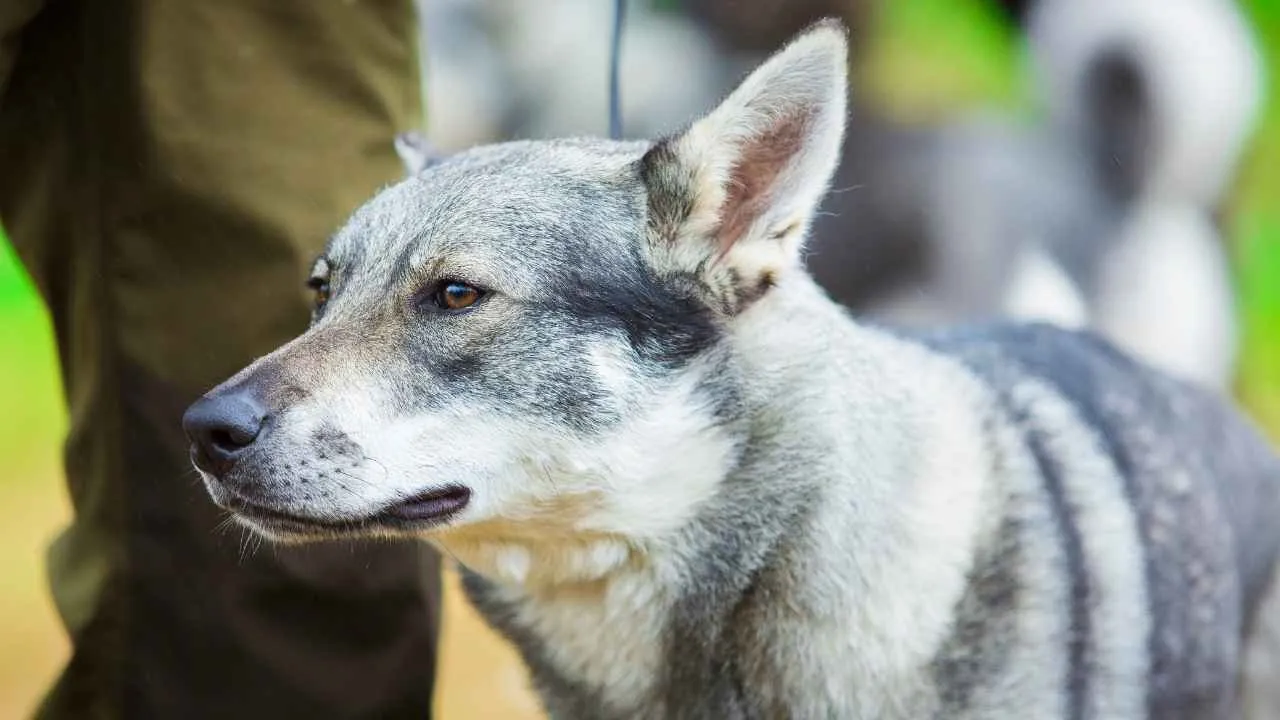
Breed Profile
Height: 19 to 20 inches
Breed Group: Hound group
Shedding: Moderate
Norwegian Elkhound is an ancient breed that has made a wonderful companion since the age of the Vikings. Commonly known as Elkies, these hunting dogs are intensely loyal and energetic canines. Their sweet temperament makes them a great pet around children of all ages.
Due to their playful nature, Norwegian Elkounds are always ready for adventure. They need one hour of physical and mental stimulation every day. Exercise may include running in a fenced yard, going on long walks, hikes, or swimming.
While Elkies are the real cuddly buddies at home, they have an independent streak, which makes them a little difficult to train. However, Norwegian Elkhounds are smart dogs, and they can be trained with consistent training involving positive reinforcement methods.
Conclusion
Many cold-weather dog breeds, including American Eskimo dog, German Shepherd, Saint Bernard, and others mentioned in this article, are well-suited for pet parents living in cold environments. However, even the fluffiest dog breed is vulnerable to hypothermia and frostbite. So, be mindful of the temperature and never leave your dog outside in the cold!


